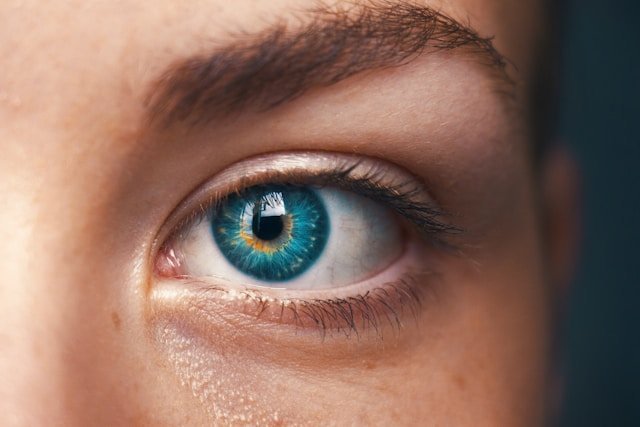Introduction:
Squint eye, medically referred to as strabismus, is a condition characterized by misalignment of the eyes, leading to a lack of coordination in their movements. This common ocular anomaly affects individuals of all ages, from infants to adults, and can have significant implications for visual function, self-esteem, and quality of life. Fortunately, with advancements in ophthalmic care and treatment modalities, effective management of squint eye is within reach. In this comprehensive guide, we delve into the nuances of squint eye treatment, exploring the underlying causes, diagnostic approaches, and therapeutic interventions aimed at restoring ocular alignment and optimizing visual outcomes.
Understanding Squint Eye:
Squint eye occurs when the muscles responsible for controlling eye movement fail to work together harmoniously, resulting in one eye deviating from its normal alignment. This misalignment can manifest in various forms, including esotropia (inward deviation), exotropia (outward deviation), hypertropia (upward deviation), and hypotropia (downward deviation). Squint eye may be constant or intermittent, and its severity can vary from mild to severe, impacting binocular vision and depth perception.
Causes of Squint Eye:
The etiology of squint eye is multifactorial and can involve a combination of genetic, anatomical, neurological, and environmental factors. Common contributors to squint eye include:
-
Muscle Imbalance: Dysfunction of the extraocular muscles responsible for aligning and coordinating eye movements can result in squint eye. Muscle weakness, tightness, or abnormal innervation can disrupt the delicate balance of ocular alignment, leading to misalignment.
-
Refractive Errors: Uncorrected refractive errors such as nearsightedness (myopia), farsightedness (hyperopia), or astigmatism can induce squint eye by causing visual blur and stimulating accommodative efforts that may exacerbate misalignment.
-
Neurological Conditions: Certain neurological disorders, such as cerebral palsy, stroke, or brain tumors, can affect the neural pathways responsible for controlling eye movements, predisposing individuals to squint eye.
-
Childhood Factors: Early visual deprivation, congenital abnormalities, prematurity, and family history of squint eye can increase the likelihood of developing the condition during infancy or childhood.
Diagnostic Evaluation:
Accurate diagnosis of squint eye is essential for devising an appropriate treatment plan tailored to individual needs. Diagnostic evaluation may include:
-
Comprehensive Eye Examination: A thorough assessment of visual acuity, refractive status, ocular motility, and binocular vision is performed to identify any underlying ocular abnormalities contributing to squint eye.
-
Cover-Uncover Test: This simple yet effective test helps detect latent squint eye by assessing the presence of ocular deviation when one eye is covered and then uncovered.
-
Prism Cover Test: By measuring the magnitude and direction of ocular misalignment using prismatic lenses, the prism cover test provides quantitative data to guide treatment decisions and monitor progress.
-
Cycloplegic Refraction: In children, cycloplegic refraction—a procedure involving the use of dilating eye drops to temporarily relax accommodation—is performed to accurately assess refractive errors and determine the need for corrective lenses.
Treatment Modalities for Squint Eye:
Squint eye treatment aims to achieve ocular alignment, restore binocular vision, and optimize visual function while addressing any underlying contributing factors. Depending on the severity and etiology of squint eye, treatment modalities may include:
-
Corrective Lenses: Prescribing glasses or contact lenses to correct refractive errors is often the first step in squint eye management. By providing optical correction, glasses help alleviate visual blur and reduce accommodative efforts that may exacerbate misalignment.
-
Vision Therapy: Also known as orthoptic therapy, vision therapy encompasses a variety of exercises and activities designed to improve eye coordination, focusing abilities, and binocular vision. Under the guidance of a trained eye care professional, vision therapy can facilitate visual rehabilitation and enhance ocular alignment.
-
Prism Glasses: Prism lenses are sometimes prescribed to optically align the eyes and compensate for residual ocular deviation, particularly in cases of small-angle squint eye or post-surgical correction.
-
Botulinum Toxin Injection: In certain instances of squint eye caused by overactive eye muscles or restrictive scar tissue, botulinum toxin injection may be used to selectively weaken or relax the affected muscles, restoring ocular alignment and improving cosmetic appearance.
-
Strabismus Surgery: Surgical intervention may be recommended to physically realign the ocular muscles and correct squint eye, especially in cases of significant deviation or failed conservative management. Strabismus surgery aims to restore binocular vision, improve depth perception, and enhance cosmetic alignment of the eyes.
Prognosis and Follow-up:
The prognosis for squint eye treatment varies depending on factors such as the underlying cause, severity of misalignment, age at onset, and response to therapy. Early intervention and comprehensive management can yield favorable outcomes, including improved ocular alignment, enhanced binocular vision, and enhanced quality of life. Regular follow-up visits with an eye care specialist are essential to monitor progress, adjust treatment as needed, and address any recurrent or residual issues.
Conclusion:
Squint eye treatment encompasses a multifaceted approach aimed at restoring ocular alignment, optimizing visual function, and addressing underlying contributing factors. From corrective lenses and vision therapy to surgical intervention and botulinum toxin injection, a range of therapeutic modalities are available to meet the diverse needs of individuals with squint eye. By fostering collaboration between patients, families, and eye care professionals, we can navigate the complexities of squint eye treatment with compassion, expertise, and a shared commitment to achieving ocular health and well-being.















